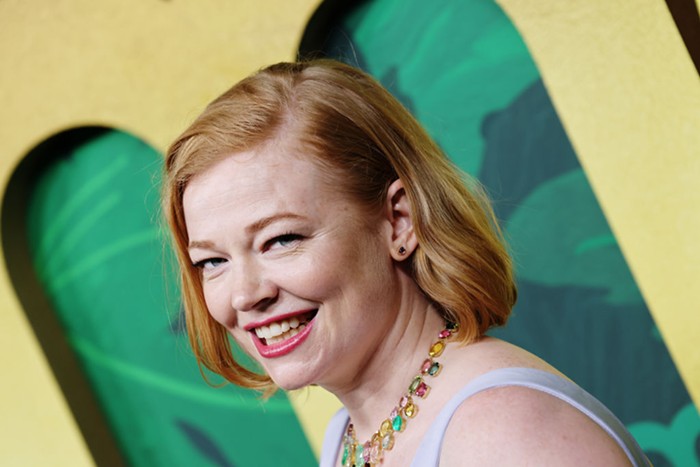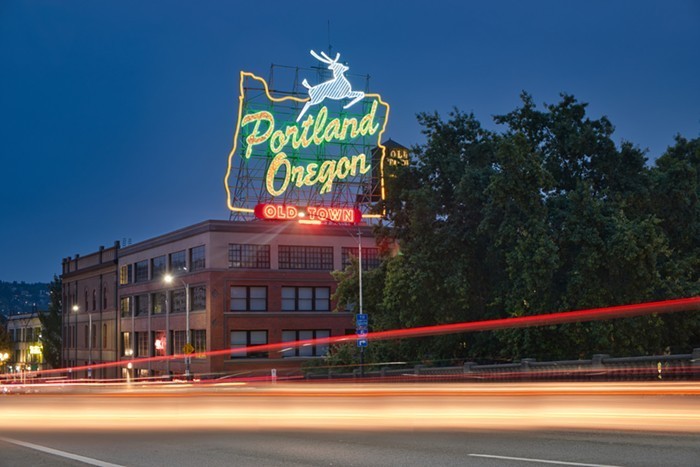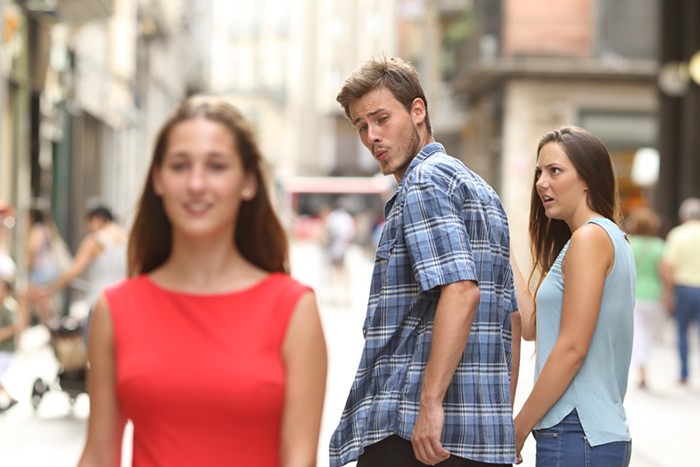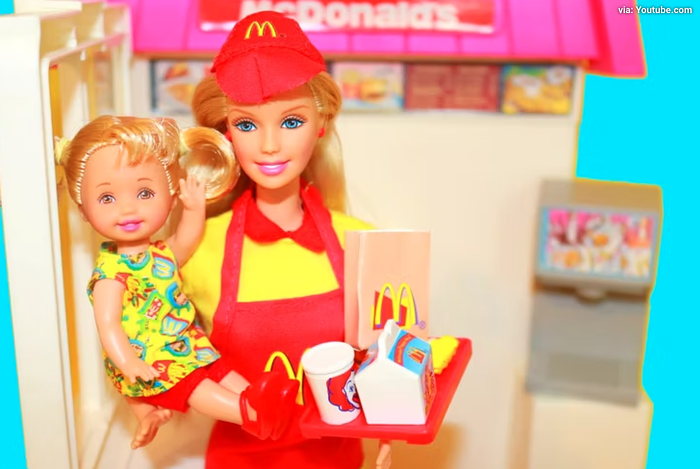Orson Welles may have described Hollywood as the world's best electric train set, but Steven Spielberg was the guy who figured out how to crank it up to the highest speed. Virtually every film of his has those indelible moments that remind you what movies can do. Wisely coming at the height of summer movie season, the Hollywood Theatre's "Spielberg on Film" series combines stone-cold classics and lesser-known projects into an irresistible package—with every film screening on either 35mm or 16mm.
By now, the origin story is well known: Movie-crazy Arizona kid shows an affinity for the family camera, finagles his way onto the Universal backlot, and learns the ropes by directing episodes of Columbo and Night Gallery. His first feature-length TV project, however, doesn't feel like the work of someone with anything to learn. 1971's man vs. truck saga Duel (screening Monday, July 3, in 35mm) is a marvel of suspense, taking the already-mythic storyline (the main character is named Mann and drives a Valiant, for Pete's sake) and stripping it down to ruthless essentials. Amid all of the gear-grinding and hairpin turns, what's most impressive is how Spielberg simultaneously evokes sweaty claustrophobia (kudos to whoever sponged down Dennis Weaver's dashboard between takes) and desperate agoraphobia (those horribly empty desert vistas).
A year later, Spielberg returned to the TV-movie well with Something Evil (Thurs July 6, 16mm), in which a family moves into a farmhouse crammed with demons. Spielberg directs like a man possessed, finding strange shapes lurking in the corners of the screen and some ferocious, pre-Evil Dead camera swoops. After years of it only being available via smudgy bootlegs, the opportunity to see Something Evil on 16mm may be the highlight of this series.
After making his theatrical debut with the underseen gem The Sugarland Express, Spielberg's next project was 1975's Jaws (Saturday, July 7, and Sunday, July 8, 35mm), which is... well, Jaws. Despite awful shooting conditions and wonky effects, Spielberg fashioned the blueprint for blockbusters, melding sequences of abject terror with a subtly funny critique of machismo. Even if you know every shot by heart, the opportunity to see Murray Hamilton's anchor-studded sport coat on the big screen should never be forsaken.
Virtually every Spielberg film has those indelible moments that remind you what movies can do.
Following the success of Close Encounters of the Third Kind (and the large-scale WTF of 1941), Spielberg teamed with George Lucas for 1981's Raiders of the Lost Ark. It may be impossible for a movie to be perfect, but this one sure feels that way, with enough confidence in Harrison Ford's charisma to explore some intriguingly dark undercurrents. The subsequent installments, while entertaining, never got the balance quite right. Even in the age of Michael Bay, 1984's Indiana Jones and the Temple of Doom remains one of the most kinetic blockbusters ever made, moving between gross-outs and brilliant set pieces without pausing for breath. (In interviews afterwards, even Spielberg seemed taken aback by what he'd unleashed.) Meanwhile, 1989's mellow Indiana Jones and the Last Crusade trades momentum for comedy and some atypically slapdash action sequences. Still, the grousing between Ford and Sean Connery, as well as a beauty of a tank chase, make the end-credit ride into the sunset feel well deserved. (All three screen Saturday, July 15 and Sunday, July 16, on 35mm, and please note the fourth installment isn't included, because it doesn't exist.)
After the globetrotting Raiders, Spielberg scaled back for a small movie about childhood that, naturally, became the highest grossing film in history. 1982's E.T. The Extra-Terrestrial (Saturday, July 1, 35mm) hasn't aged particularly well, honestly, with an overabundance of gawping-in-awe shots and John Williams' aggressively twinkly score. (When detractors ping Spielberg for sentimentality, this is where they start.) Still, there's plenty of magic, particularly in the way Spielberg treats his kid characters like actual, imperfect kids. Kleenex is recommended for E.T., as well as for 1985's The Color Purple (Sunday, July 2, 35mm), Spielberg's 1985 adaptation of Alice Walker's novel that also leans hard into sentiment. This one, though, is worth catching for the performances of Whoopi Goldberg and Oprah Winfrey—not to mention the fact that while Spielberg's blockbusters sometimes seem to be in constant rotation in Portland, the opportunity to see The Color Purple in a theater is far more rare.
Spielberg's kinder, gentler trend continued with 1983's Twilight Zone: The Movie (Sunday, July 9, 35mm), with the director contributing a low-key segment that captures the moralistic spirit of the show—unfortunately, it's not in line with any of the episodes people remember fondly. That said, you're going to want to head to the Hollywood anyway just for George Miller's unforgettably tense airplane segment, which starts at ludicrous speed, then keeps reaching for the throttle.
And then there's 1993's Jurassic Park (Saturday, July 8 and Sunday, July 9, 35mm), which found the director returning to his escapist roots after exploring more mature, award-friendly territory. Okay, okay—the first hour or so is clunky. But with that first sighting of the T. rex, any issues race away. A triumph of choreography, camera placement, and small, witty details—the sound of those squeaking teeth on the moonroof!—it shows why Spielberg set the gold standard for popcorn movies. When he's cooking, there's nobody better.


















